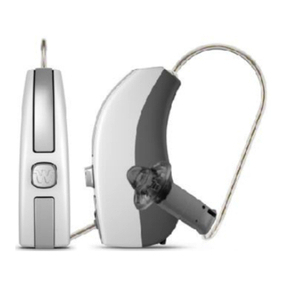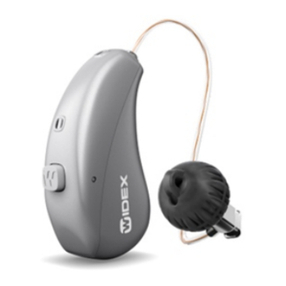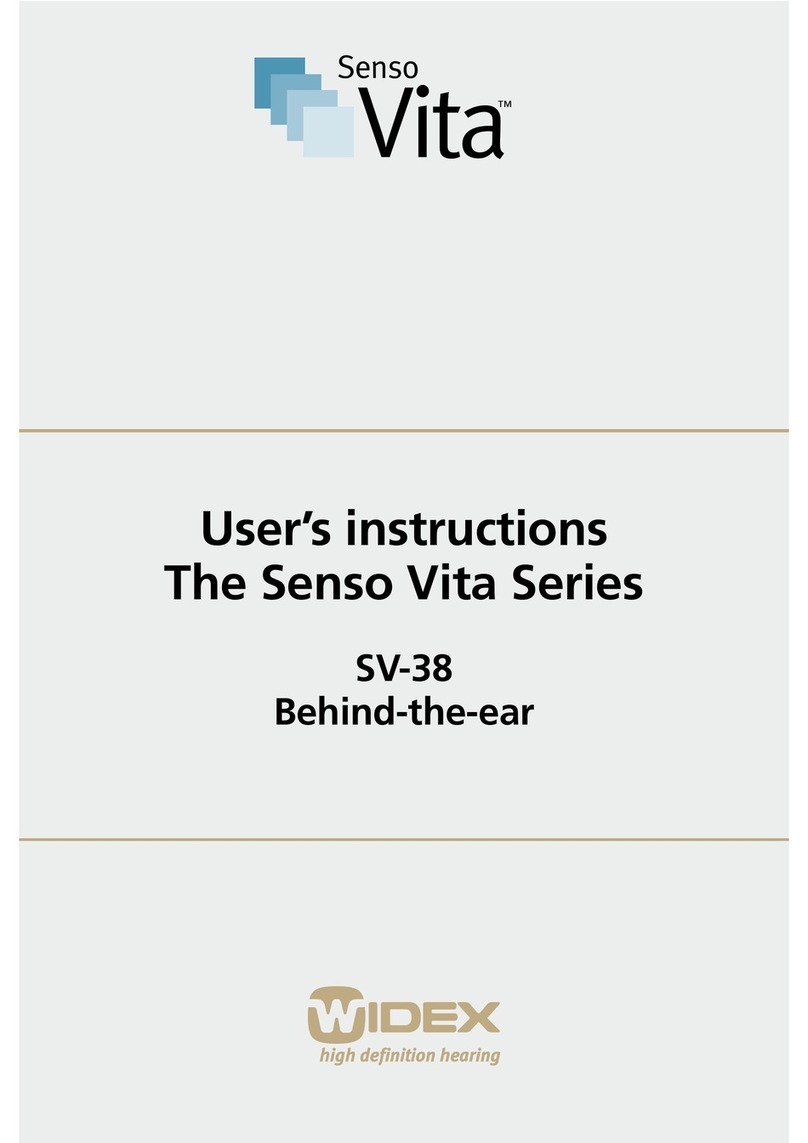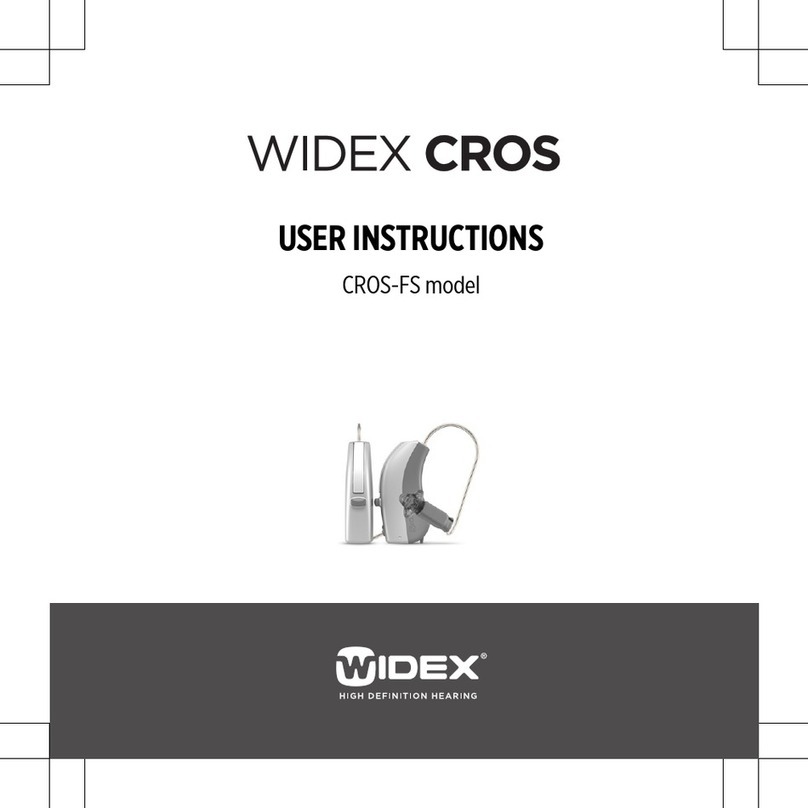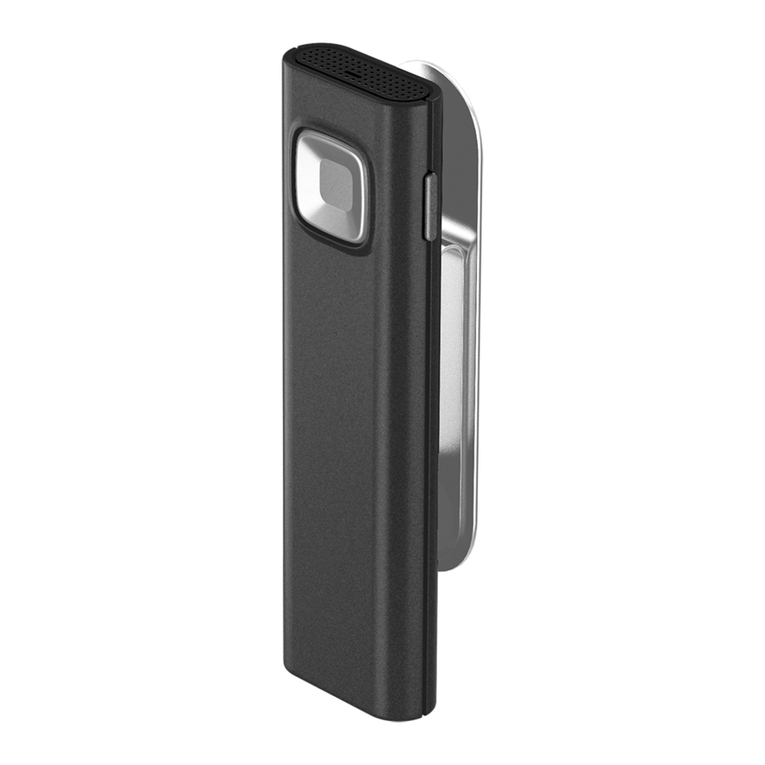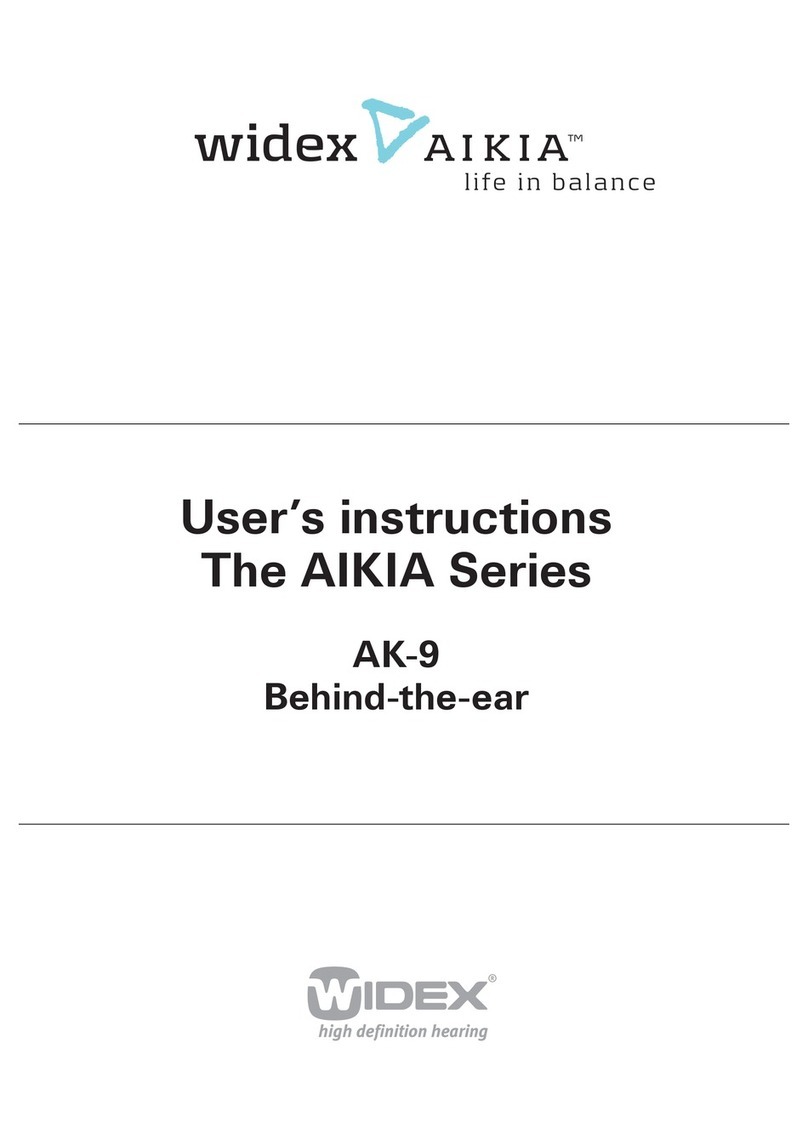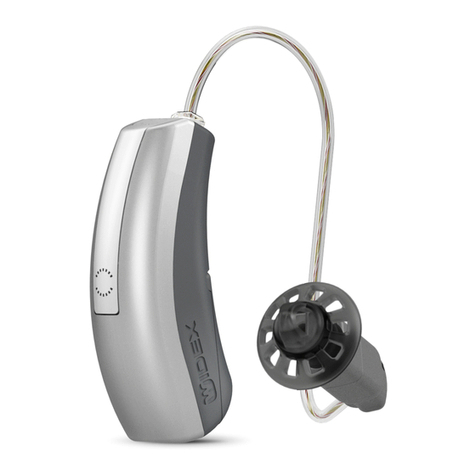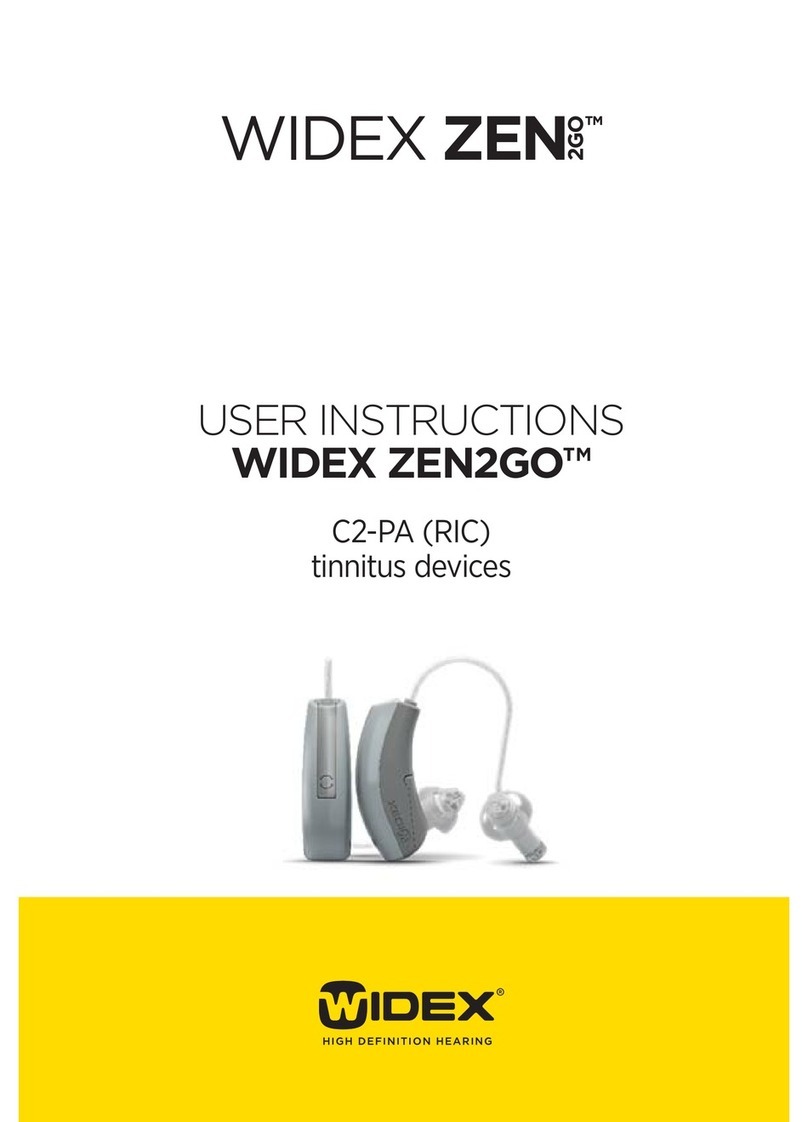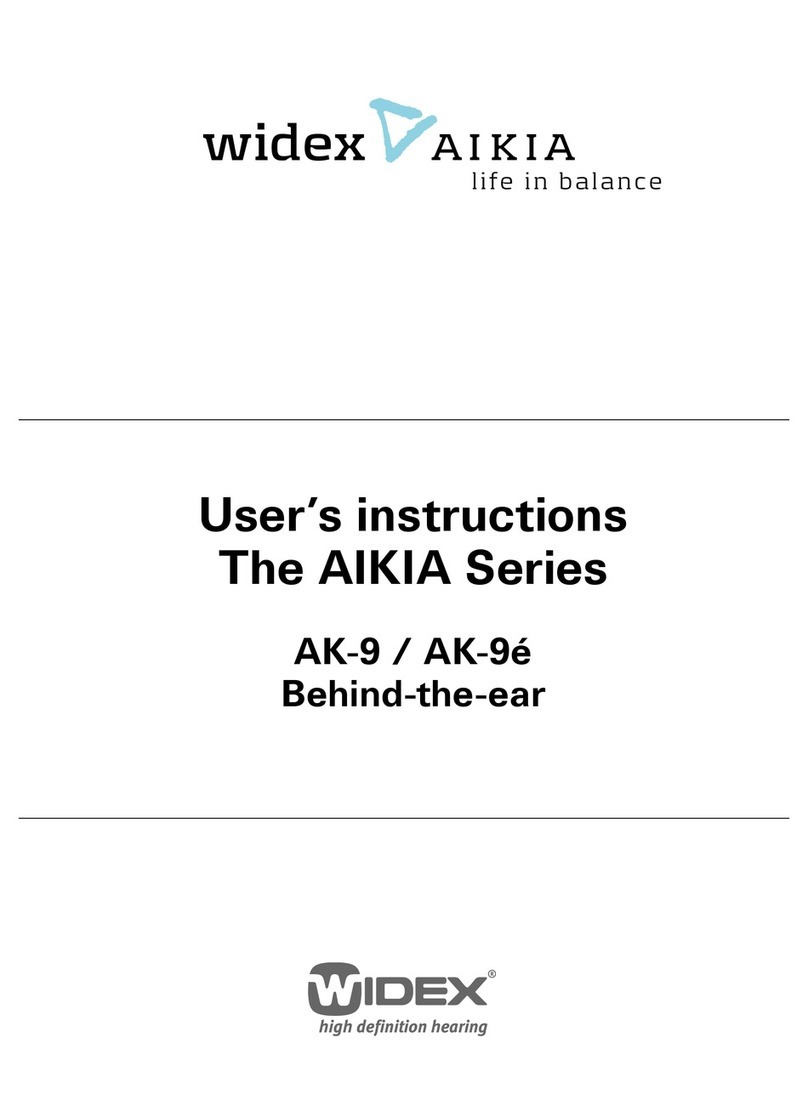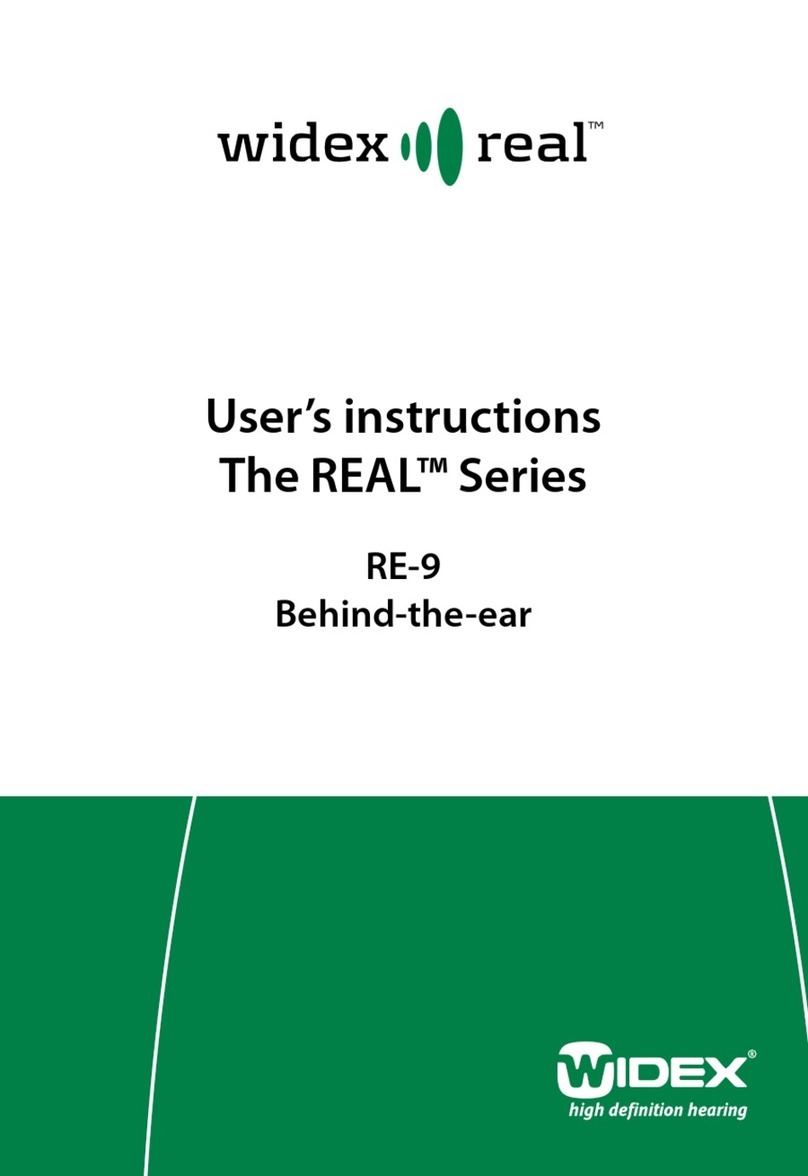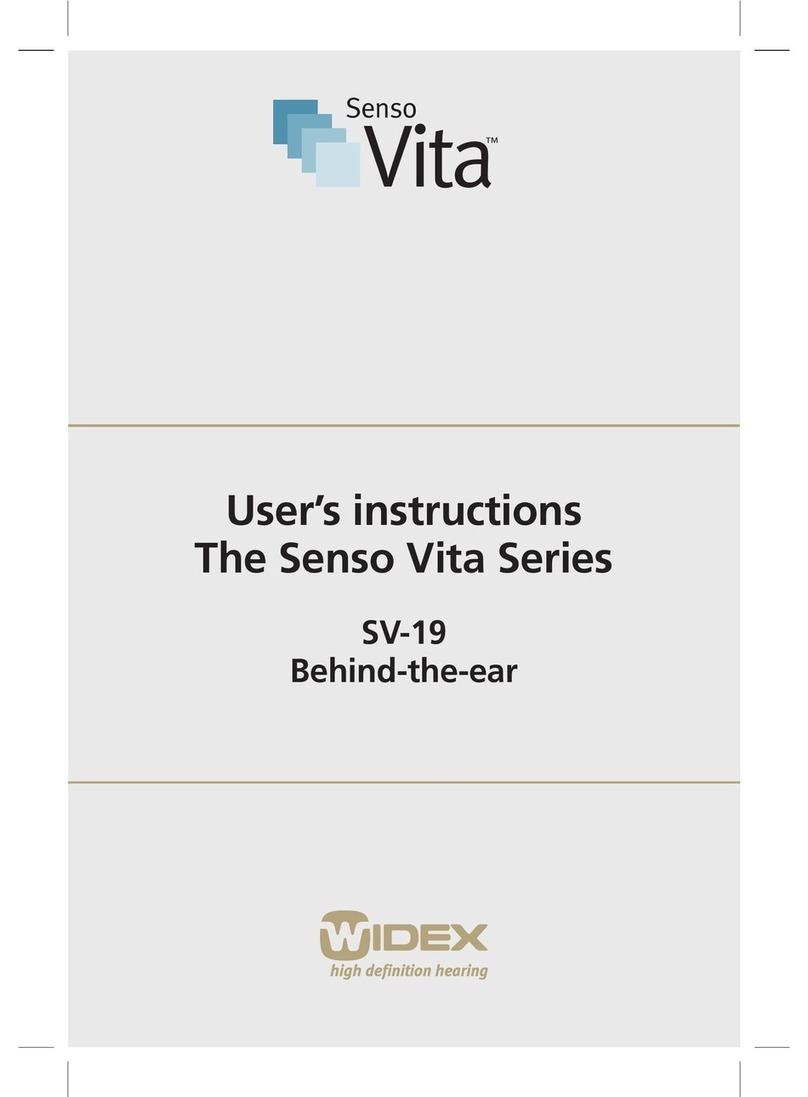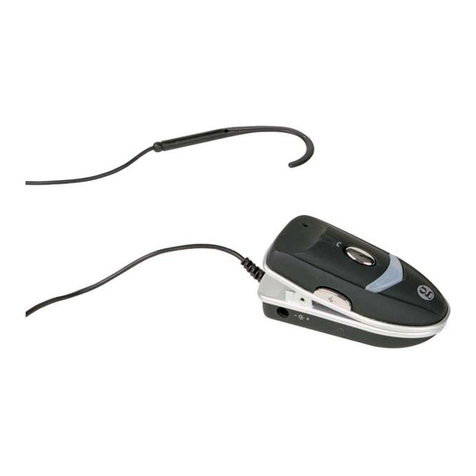23
The hearing aid, ear-set and accessories shown in these
instructions may not look the same as the ones you
have. We furthermore reserve the right to make any
changes considered necessary.
Hearing aids, their accessories and batter-
ies should not be disposed of with normal
household waste. Please consult your na-
tional Widex distributor for advice on how
to dispose of these items.
Contents
Thank you…...........................................4
The hearing aid........................................5
Function signals .......................................6
Light emitting diode................................... 6
Right/left identification ................................7
The battery............................................8
Inserting the battery................................... 9
Low battery indication................................10
Turning the hearing aid on and off. . . . . . . . . . . . . . . . . . . . . 12
Placing the hearing aid and earmould . . . . . . . . . . . . . . . . . 13
Removing the hearing aid and earmould. . . . . . . . . . . . . . . 14
Possible start-up settings . . . . . . . . . . . . . . . . . . . . . . . . . . . . . 15
Automatic volume adjustment . . . . . . . . . . . . . . . . . . . . . . . . 16
Fine tuning volume ...................................17
Listening programs ...................................19
Switching between the listening programs . . . . . . . . . . . . 21
Remote control.......................................23
Using a telephone ....................................24
Cleaning .............................................25
The hearing aid.......................................26
The microphone openings............................27
The earmould ........................................28
Changing the tubing..................................29
Caring for your hearing aid . . . . . . . . . . . . . . . . . . . . . . . . . . . . 30
Good advice..........................................32
Accessories...........................................34
Audio input ..........................................34
FM systems...........................................36
In case of malfunction.................................37
Your hearing aid ......................................39
